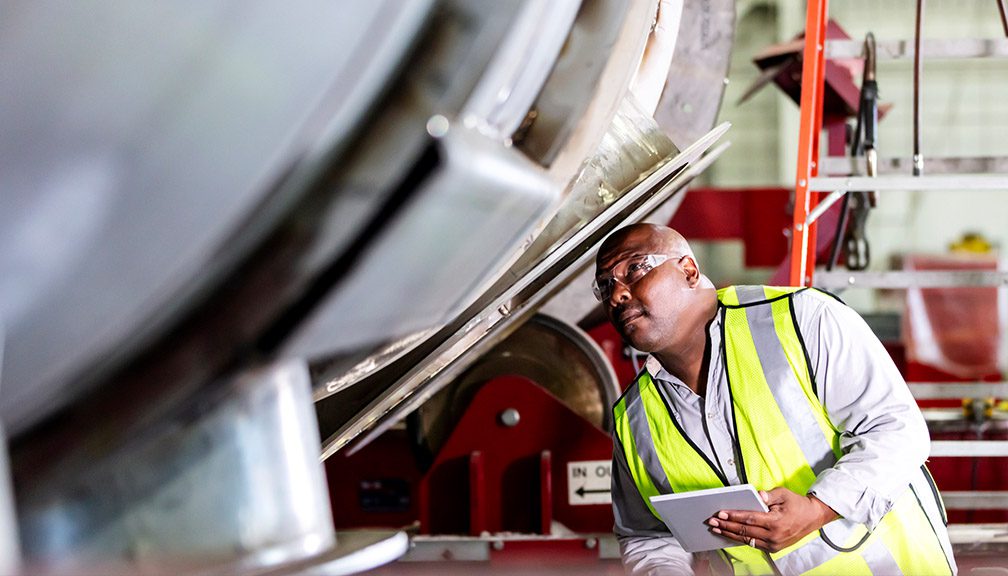The 6 most common manufacturing injuries and how to prevent them.

Did you know manufacturing injuries make up 20% of the private industry’s injuries? With heavy machinery, moving parts, and quick turnarounds, these worksites can be dangerous places to work … especially if the right precautions aren’t taken. As a business owner or a manufacturing employee, it’s important to keep safety for the team a top priority. Learn the six most common manufacturing injuries, the ways to avoid them, and how to create a healthier workplace.
Machine or contact-related injuries. Serious injuries like crushing, loss of limbs, or even fatality can occur when machines malfunction or someone is distracted. To prevent these types of injuries from happening, implement safety protocol. Ensure your staff is properly trained upon hiring and perform periodic refreshers. Have a safety services expert visit the worksite to evaluate hazards and prevent injury. Put safety measures, like lockout, tagout, into effect to safeguard workers from hazardous energy from machines.
Slip or fall injuries. Wet or slippery floors can be dangerous, especially in a factory setting with sharp and heavy objects around. Train the team to keep your spaces clean. If a spill happens or debris is in the way, clearly mark these hazards while they’re waiting to be cleared. Also, be sure to consistently keep walkways free of clutter throughout the day and at close of business.
Overexertion injuries. Long hours can lead to overexertion and dehydration in the workplace, and these can lead to mistakes on the job. Enforce breaks throughout the workday to avoid overstress on the body. Make it clear that days off are important and are encouraged so your staff can rest and recharge when needed.
Vehicle injuries. There are always vehicles moving around manufacturing sites, so it’s important to promote safety when handling or working near them. Collisions and falling objects are more common with machinery like forklifts. Ensure only trained workers are operating them and implement safe boundaries for employees working near them. Communication is also key to avoiding vehicle injuries, so be clear about what you are going to do and speak up if you see a potential hazard about to happen.
Chemical injuries. With the possibilities of asthma, loss of senses, or even in rare cases, cancer, chemical safety procedures must be in place and enforced to protect your staff and worksite. Make sure your team is clear on how to handle hazardous chemicals and what to do in emergencies. Pay close attention to the warning labels on each chemical used. Keep a clean space with proper storage and ventilation for chemicals. And always have personal protective equipment available for staff members who encounter these chemicals.
Repetitive stress injuries. These worksite injuries can happen from doing the same job repeatedly throughout the day. Muscle strain and soft tissue deterioration are only some of the consequences of repetitive motion on the job. If possible, implement a rotation program where your staff shifts jobs throughout the day. This can help reduce repetitive stress injuries while also allowing your team to be more versatile throughout the company. Promote worksite wellness programs or incentives to keep your team active and their bodies healthy.
Regular evaluations can be highly effective at keeping your manufacturing facility safe and running. It’s important to avoid cutting corners as well – though it may seem tedious, it can go a long way for safety. Now that you know the most common manufacturing injuries, get the right manufacturers insurance coverage. A local, independent agent can help you build the right protection for your business.




